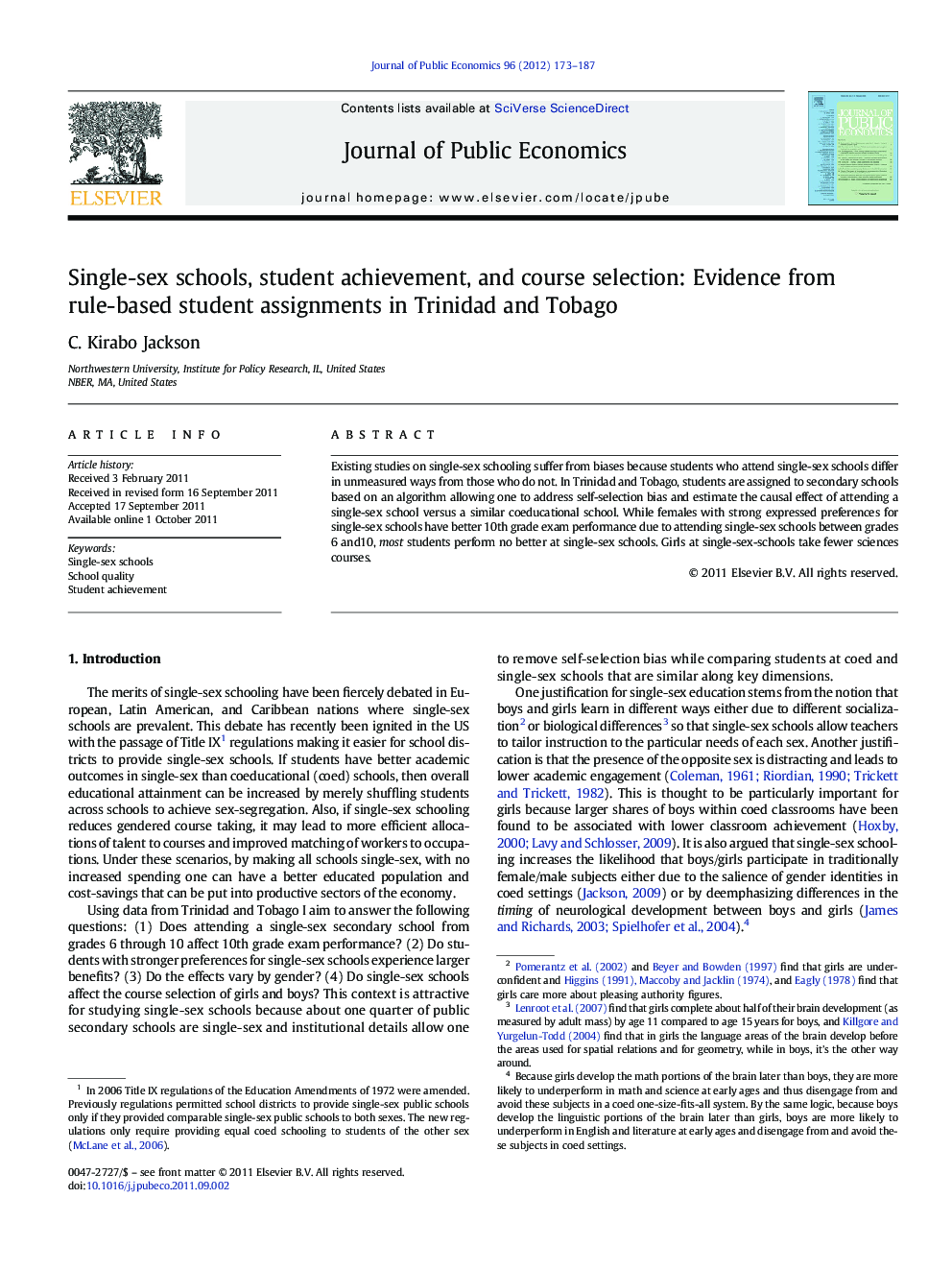| Article ID | Journal | Published Year | Pages | File Type |
|---|---|---|---|---|
| 969259 | Journal of Public Economics | 2012 | 15 Pages |
Existing studies on single-sex schooling suffer from biases because students who attend single-sex schools differ in unmeasured ways from those who do not. In Trinidad and Tobago, students are assigned to secondary schools based on an algorithm allowing one to address self-selection bias and estimate the causal effect of attending a single-sex school versus a similar coeducational school. While females with strong expressed preferences for single-sex schools have better 10th grade exam performance due to attending single-sex schools between grades 6 and10, most students perform no better at single-sex schools. Girls at single-sex-schools take fewer sciences courses.
► This is the first study to credibly identify the causal effect of single-sex schools on student outcomes. ► Single-sex schools have no effect on over 85% of students. ► Single-sex schools have large positive effects only on students with strong preferences for single-sex schools. ► Some girls benefit from single-sex schools but boys do not. ► Girls at single-sex schools take fewer math and science courses.
